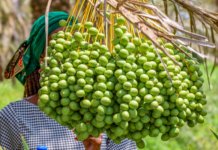In February 2022, 282 million people were experiencing hunger in Africa, more than double the proportion of any other region in the world.
According to the World Bank, conditions are deteriorating across East Africa, where 7.2 million people are at risk of starvation and another 26.5 million face acute food insecurity.
“The situation in African countries experiencing fragility, conflict and violence (FCV) is much worse—29% of the population experiences food insecurity, compared to 18% in non-FCV countries in Sub-Saharan Africa in 2021,” it said.
“There are also huge variabilities in the numbers. For example, in the conflict-affected country of Cameroon 13% experience hunger compared to over 50% the population in Mali, South Sudan, and Burkina Faso.
“But new innovative agricultural technologies that can feed everyone, everywhere, every day with nutritious food can be part of the solution to reverse this trend.”
However, in its new report, Insect and Hydroponic Farming: The New Circular Food Economy, the World Bank looks at the benefits of expanding frontier agricultural technologies within a circular food economy in FCV countries in Africa.
The report also looks at how insect and hydroponic farming can create jobs, diversify livelihoods, and improve nutrition.
“These technologies work in locations with limited resources – such as water and arable land – which is a major challenge in FCV countries. “Insect and hydroponic farming also save farmers money and government’s hard currency reserves by reducing purchases of food, animal feed, and fertilizers. This is particularly important today given supply problems and price increases of food, feed, and fertiliser,” the World Bank added.
It said about one to two billion people globally consume insects, including in Africa.
The report notes that: “Insects are more environmentally sustainable than other animal proteins and more nutritious than soybean protein. But currently, insects are mainly collected in the wild, posing potential dangers. Insects foraged in the wild could be eating crops sprayed with harmful pesticides.
“Over-harvesting insects can increase the risk of running down the ecosystems, as seen with the mopane worms in southern Africa. Insects collected in the wild are seasonal and mostly unavailable in the lean season.”
According to the World Bank, farming insects can provide a healthy and all-year protein supply of nutritious food for humans, livestock, and fish – right now, we often use fish to feed livestock and fish.
“Operations can be established at a low cost, opening up opportunities for climate-resilient jobs, including for women, youth, and refugees who often live in locations with limited resources.
“They can be established in arid areas and cities, while at the same time conserving biodiversity and other essential natural resources. We can feed insects with organic waste, such as household, agriculture, or brewery waste, while reducing greenhouse gas emissions and creating climate-resilient livelihoods. Waste from insects can then be fed back into the system as organic fertilizers to help improve soil health.”
It added: “These innovative approaches can strengthen the African food system, and fits a circular economy that can complement conventional farming.”
According to the World Bank, each year the number of new entrants and markets for insects around the world increases.
It said it is estimated that the global market for insects as food and animal feed will be worth up to US$8 billion by 2030, a 24% annual growth rate over the next decade.
Survey data collected for the report in 13 African countries show that there are already 850 insect farms that produce insects for food and feed in these countries. Imagine collecting 30% of agriculture waste of the top five crops in the top 10 African agriculture economies and feeding it to black soldier flies.
This would result in replacing 60 million tonnes of traditional fish and soy-based-animal feed, which is enough protein to meet up to 14% of the crude protein needed to rear all the pigs, goats, fish, and poultry in Africa; creating 15 million direct and indirect jobs; incomes, and livelihoods, along the value chain; and reducing greenhouse gas emissions equivalent of taking 18 million cars off the road annually.
“Farming insects and hydroponic crops can be part of efforts to improve peace-building and resilience to fragility, conflict, and violence through the creation of a more stable and sustainable food system that provides economic opportunities using fewer natural resources,” the World Bank added.
It said from its findings, the World Bank had started to pilot insect farming for food and feed in selected countries in Africa and work towards contributing to the world’s climate, food, and nutrition security crisis.








